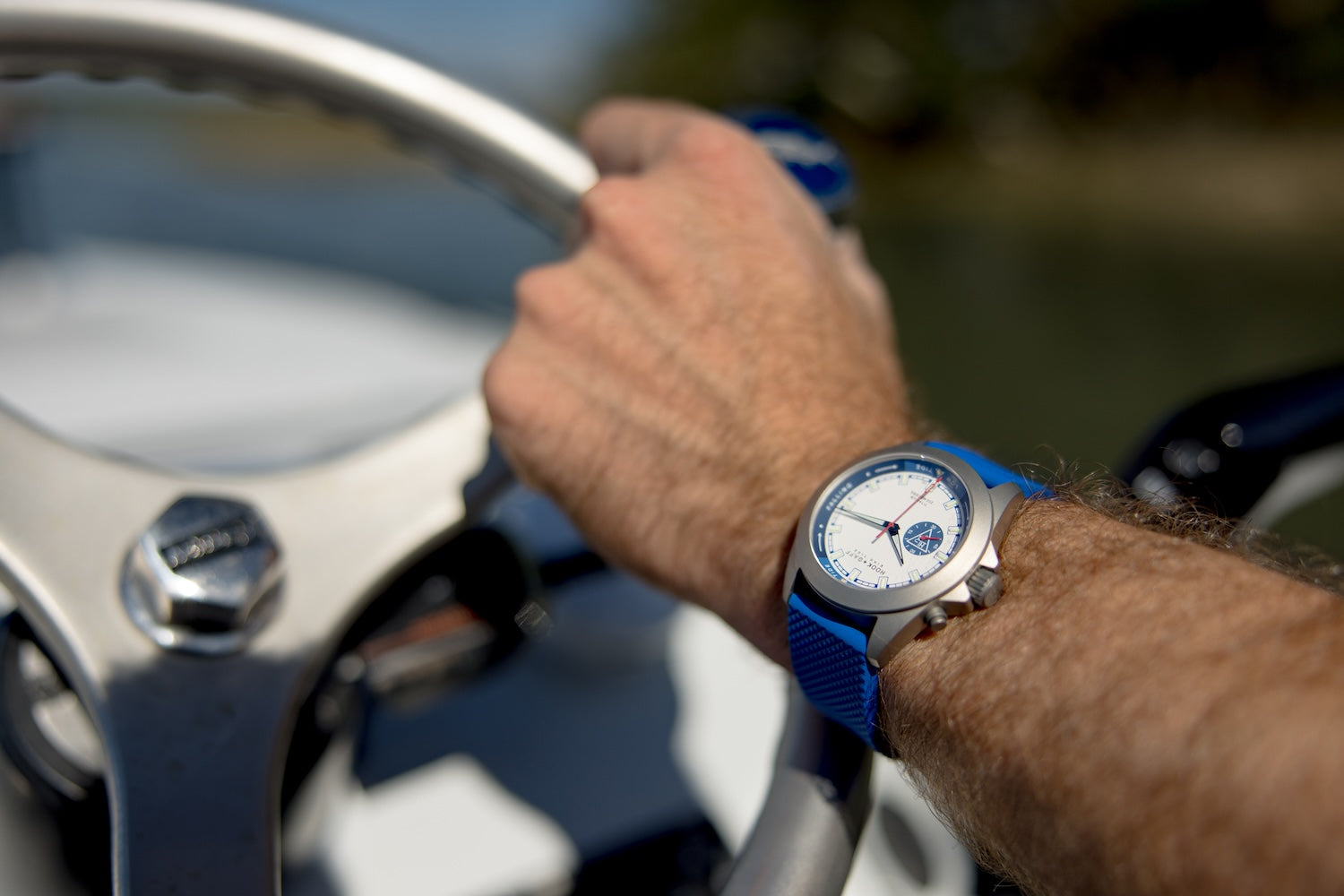For thousands of years, humans have turned to the moon and stars for guidance. Before clocks, before timepieces and before quartz movement, time was marked by the sun, the moon and the stars. From ancient Greek calendar systems to the three kings following the star of Bethlehem, our history is inextricably tied to the sky. Specifically, the lunar cycle of about 29.5 days gives us months.
And, of course, fishermen have been at the mercy of the moon and its ebb-and-flow effects on the tides for centuries. The way we track the tide now is in essence the same as almost two millennia ago, but the sophisticated technology used in moonphase watches today would impress even Ptolemy.

What is a Moonphase Watch?
A “moon phase” is marked by the shape of the lighted part of the moon we can see from the earth. We constantly see a different view due to the movement of the earth. While there are many names for the intermediary views, we usually focus on the main four - "new moon" (no visible moon), "first quarter" (right side is visible), "full moon", and "last quarter" (left side is visible). The process from "new moon" to "full moon" is referred to as waxing, and from "full moon" back to "new moon" is called waning.
Ancient Greeks derived a mechanism as early as 205 B.C. that displayed the position of the moon and known planets, the dates of the next Olympic games, and the current month and day. This complex system was unrivaled for nearly a thousand years. Then, during the Renaissance, astronomical clocks were invented. These clocks — usually built inside a cathedral — showed the orbit of the planets and phases of the moon, along with the day and time. However, at the time, it was widely accepted that the Earth was at the center of the Universe, and so astronomical clocks fell out of favor as scientists discovered that this was not the case. Then, the initial crude models were brought back into popularity and applied to personal wristwatches in the late 19th century. Enter "moon phase watches." Now, they work more accurately than ever before.

How do Moon Phase Watches Work?
The lunar cycle, or the time it takes to get from a new moon (when it’s not visible) to a full moon and back again, takes roughly 29.53 days — and it’s what our calendar months are still based on. A moon phase watch reflects what phase the moon is in as you see it in the sky. A 59-toothed gear drives a metal finger connected to the hour hand of a movement watch, advancing it one notch every 24 hours. This means that, due to the imperfect number of days in a lunar cycle, the moonphase watch will require a manual adjustment every 2.5 years.
Where Can I Get a Moon Phase Watch?
Whether you decide you need a moonphase watch to better understand our solar system, are a surfer or angler who heavily depends on the state of the tide, or simply like the ties to our sky-watching ancestors, Hook+Gaff has you covered. The Sportfisher II Moonphase Dial houses a custom Swiss quartz movement and displays the moonphase and date, as well as the time. And, the crown is placed on the left side of the watch face to avoid discomfort or irritation — much more comfortable than carrying around an entire cathedral. Plus, the titanium case is corrosion- and water-resistant, in addition to being a poor conductor of heat. That makes it the perfect watch to take out for a hot day on the water — the Ancient Greeks would be so proud.
Hook+Gaff’s Sportfisher II Moonphase watch (pictured below) starts at $650 and comes with a silver face, a black face or a blue face, and a variety of strap options.
How to Set the Moon Phase on Your Watch
We've created this short video to show you how to set the moon phase on your watch:
Transcript:
Hey, guys. Michael Sims here, owner and founder of Hook + Gaff. Today we're going to go over how to set the moon phase mechanism on your Sportfisher II Moonphase watch.
The first thing we're going to do is look online or look in the newspaper and find out what the current phase of the moon is, and what you're looking for is the current position. We're gonna try to match that position with the mechanism on the watch.
The moon on your watch moves from right to left across the dial, and it will read full right in the center. Once we've found out the current position of the moon, we're going to unscrew the crown, pull the crown out all the way to position three where you set the time, and in this position you're also gonna be able to set the moon on this watch.
You do that by moving forward 24 hours in time, and as we approach the midnight hour, you will actually see the moon click over one position, and you'll hear the click, too.
I wanna caution against going backwards to try to set the moon. That may actually damage the movement, so we want to caution against that and just make sure you go forwards. If you have to catch it up 10 or 12 positions, it may take you a few minutes to do that. But that's the correct way to do it.
Then when you're done with that, you're going to apply a bit of force and screw the crown down at the same time until it's tight against the case. This will ensure water-resistance for your watch.





